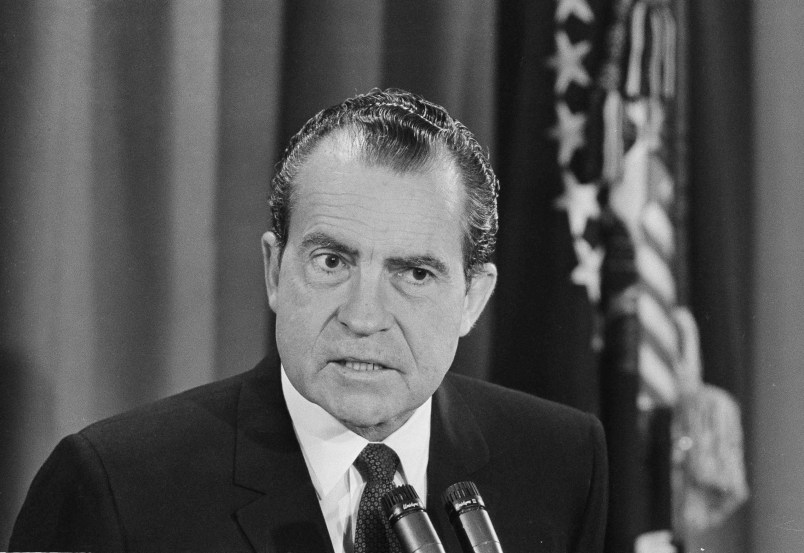Donald Trump’s dark, angry law-and-order appeal was a throwback to Richard Nixon’s 1968 presidential campaign. Here’s Nixon’s 1968 acceptance speech:
As we look at America, we see cities enveloped in smoke and flame. We hear sirens in the night. We see Americans dying on distant battlefields abroad. We see Americans hating each other; fighting each other; killing each other at home. And as we see and hear these things, millions of Americans cry out in anguish. Did we come all this way for this?
I suspect former Nixon operative and Trump advisor had a hand in framing Trump’s speech – either directly or though Stone’s former colleague Paul Manafort.
Nixon’s law-and-order appeal probably helped him win the election in 1968. In that era, the electorate was almost entirely white, and voters with only a high school education made up a large percent of the electorate, and Democrats won many elections because their support was inversely proportional to income and education – in other words, Democrats won most of white working class votes. To win a presidential election, a Republican had to cut into this margin.
In 1968, the nation was actually in turmoil. There had been five major ghetto riots in the year prior to the Republican convention, including riots in Detroit and Newark and Washington D.C. Violent crime rates were soaring. And protests against the Vietnam war were growing larger and more confrontational. Nixon could appeal to a great number of “forgotten Americans” – the “non-shouters,” the “non-demonstrators” – for support. And results showed, for instance, in the industrial Midwest, which Nixon swept except for Michigan.
The times now are different. There is growing fear of crime and disorder from police killings and Islamist terrorist attacks, which has been magnified by non-stop social media, but nothing like what was going on in 1968. The Republicans’ presidential task is different. Minorities make up between 25 and 30 percent of the electorate – perhaps the higher number next November. Trump’s speech, dwelling on the criminality of illegal immigrants and black killings of police, but not vice versa, did little to win or neutralize their vote. And much of the white working class is already in the Republican column.
A better precedent for Trump might have been George W. Bush’s 2004 campaign, where he made a careful targeted appeal around the claim that he had kept America safe from terror since the September 11, 2001 attacks. Bush’s appeal resonated with a particular voter group that had been moving to the Democrats, white women. For many of these voters, the issue of family safety trumped the usual economic and socio-cultural concerns. Nationally, Bush’s vote among this group went from 49 to 48 percent in 2000 to 55 to 44 percent in 2004. This made a lot of difference.
Can Trump win these voters? Perhaps Ivanka Trump could win them if she runs in 16 years – playing Marine Le Pen to her father’s Jean-Marie Le Pen – but it’s doubtful that Trump could win them on law-and-order grounds. The only caveat is whether Trump, like Bush in 2004, gets a boost from the Islamists prior to the election. In 2004, Osama Bin Laden released an incendiary video four days before the November election that clearly helped Bush. I can’t imagine that ISIS’s leaders would not prefer Trump whose ban on immigrants from countries in the Middle East would surely enhance their cause Given that, they might try to pull off a major attack just before this year’s election. If that happens, it will boost Trump, but I doubt if it’ll do so by enough.






